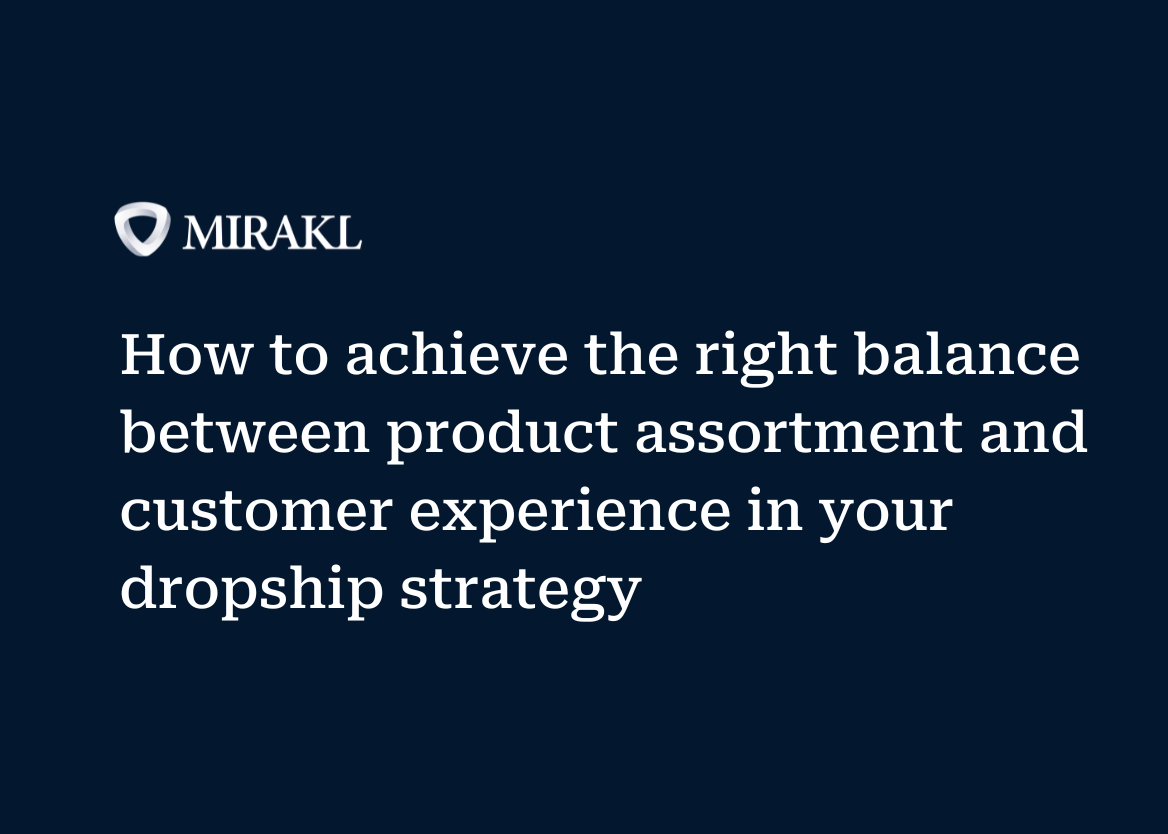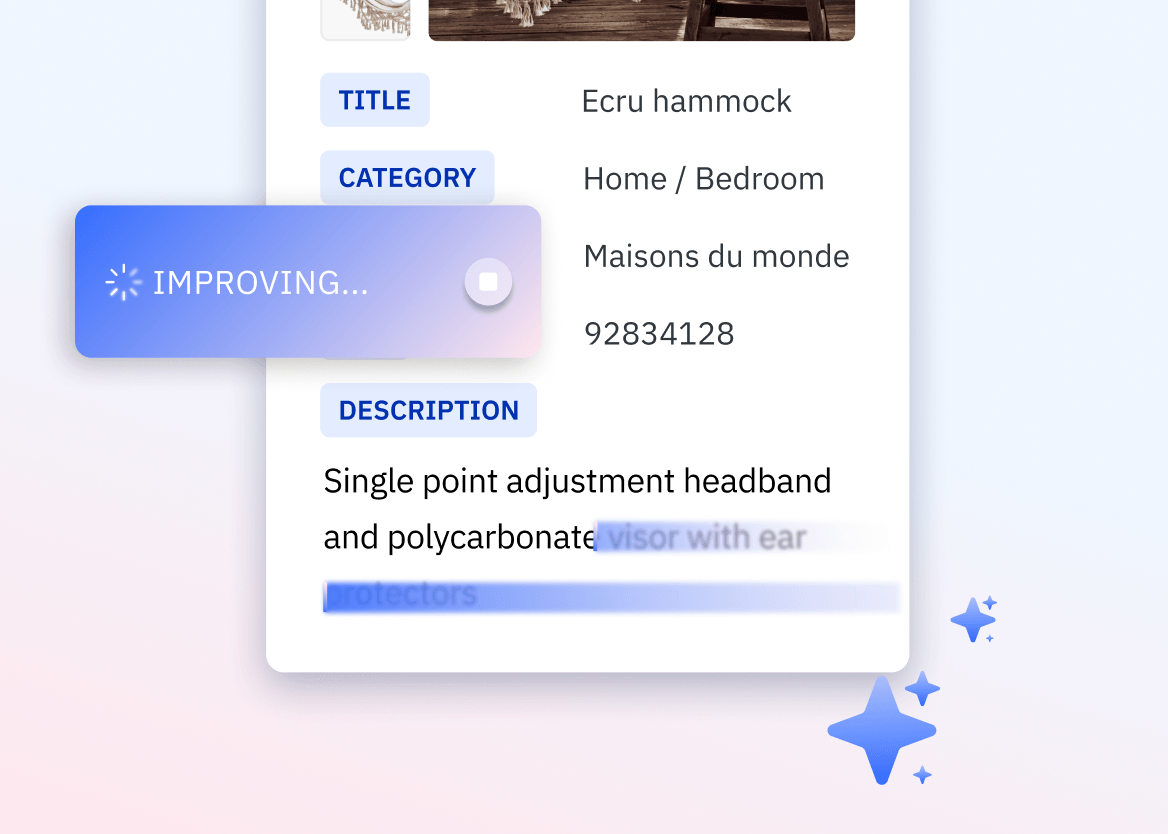Is your dropship data ready for Model Context Protocol (MCP) and agentic commerce?

As with most things in the AI space, agentic commerce is quickly moving from dream to reality. Recent research shows 60% of shoppers are using AI, and related web traffic has seen a 4,700% year-over-year increase.
That means that today, the accuracy and accessibility of your product data is more important than ever.
That's because AI shopping agents don't consume web pages in the same way humans do. Rather, they make decisions based on structured, machine-readable data that can be processed through APIs and payment systems — like those being developed by major providers to enable seamless, agent-driven transactions.
This will come as a blessing to those with impeccable product data, and a curse to those who don't have such quality controls over their catalogs.
The Model Context Protocol (MCP) facilitates the integration and sharing of data with external tools, systems, and data sources. This enhances the efficiency of AI agents in locating products that shoppers are requesting.
For retailers running dropship programs, it's critical to know what MCP is (and is not) and how it will factor into your path to success in the agentic commerce era.
What is Model Context Protocol (MCP)?
Let's answer the first question: What is Model Context Protocol?
At its simplest, MCP is a set of rules, or a digital "handshake," that allows an AI model (like the engine behind a shopping agent) to query data directly from a source, rather than having to "read" a public-facing website.
A MCP server is the technical endpoint that provides a gateway to this data in a structured format and responds to the AI's queries.
Think of it this way:
Web scraping (the old way): Similar to how humans scan webpages, web scrapping is when an AI agent visits your website and tries to guess where the price, inventory and product descriptions are on the page. It's slow, fragile and breaks every time you update your site's design.
MCP (the next step): AI agent goes to your MCP server's dedicated "door," presents its credentials, and asks directly: "What is the price, inventory, and delivery time for SKU 123?" The server understands the question and provides a clean, structured answer.
Here, it’s important to note that an MCP server manages access rights and what’s possible to call — and doesn’t blindly serve data to anyone connected to it.
Even so, this is a massive step up from scraping. Unfortunately, for retailers running a complex dropship program, this is where the picture gets dangerously simplified.
The Dropship dilemma: An MCP is just a door to a disorganized closet
An MCP is a fantastic tool if you have one, single, clean source of data to plug into it.
But as a dropship retailer, you don't. That’s because your product catalog isn't one clean file.
It's a constant, potentially fragmented and chaotic flow of data from hundreds — or even thousands — of third-party vendor partners. Each vendor sends you data in different formats, with different attributes and on different update schedules.
The problem is that an MCP only serves the data it's given.
If your underlying dropship data is inconsistent, out-of-date or inaccurate, your MCP will faithfully and efficiently serve that bad data directly to the AI shopping agent. It’s like trying to retrieve something from a closet you never organize.
This is the "garbage in, garbage out" principle, now supercharged for the agentic era.
When an AI agent gets bad data (like an out-of-stock item listed as "in-stock," or an incorrect price), the purchase fails.
This doesn't just lose you a sale; it teaches the agent not to trust your brand in the future.
How AI agents interact with product data on three levels
If you’re running a dropship program today, it's important to understand the different ways an agent can access your data and where your data might be insufficient.
Level 1: Web scraping (the guess) This is the most basic method. The agent "reads" your HTML, guessing at data fields. It's slow, brittle and notoriously unreliable for dropship catalogs where inventory and pricing change constantly. Your products will often be misrepresented or missed entirely.
Level 2: Model Context Protocol (the direct question) This is far better. The agent directly queries your MCP server. It's fast and programmatically accurate. But it has a critical flaw for dropship: it relies on you having already solved the massive, manual problem of aggregating, cleaning, and standardizing data from all your vendors, before the agent asks for it. An MCP is a "point-to-point" tool, and you don't have one point; you have one thousand.
Level 3: A purpose-built platform (the orchestrated answer) This is the only approach that solves the root problem. A true dropship platform, like Mirakl, is built to handle this "many-to-many" complexity. It acts as the central operating system to:
Ingest: Automatically pull data from all your vendors, in any format.
Normalize and enrich: Use AI to clean, standardize and enrich this data into a single, unified, high-quality catalog.
Serve: Expose this single source of truth to any channel — your eCommerce site, your internal tools and any AI agent or MCP that comes knocking.
A platform solves the data chaos first. An MCP just exposes it.
The limitations of MCPs for dropship complexity
MCP is a data-serving tool. It is not an orchestration engine.
Relying on MCPs alone leaves your dropship program vulnerable because they were not designed to:
Handle "many-to-many" complexity: An MCP is a 1-to-1 connection. It doesn't solve the operational nightmare of managing 1,000 vendors. This creates a fragile "patchwork" of connections, not a scalable system.
Enforce data quality or SLAs: An MCP can't tell you if a vendor's data is late or low-quality. It can't manage your vendor SLAs or scorecards to ensure performance.
Orchestrate the full journey: Agentic commerce isn't just about discovery. It's about the full transaction. Most agentic systems will find it too risky to rely on an MCP to handle order flow, manage shipping logic or route orders to the right vendor.
This is why point-to-point tools are not optimal for agentic commerce. They are a workaround, not the infrastructure.
Dropship needs a platform, not a patchwork
AI shopping agents are clever.
Point-to-point tools like Model Context Protocol are a flexible and important step forward. But as we've seen, neither offers the scale, trust and structured intelligence needed for real agentic commerce, especially given the unique complexities of a dropship model.
To win in this new era, you cannot simply put an "AI-ready" label on top of a fragmented, legacy system. After all, your AI strategy is only as good as the data you feed it.
Instead, you need a purpose-built platform that eliminates your operational complexity, gives you total control over your data and guarantees an exceptional customer experience.
Discover your 5 signs to move to a modern dropship platform.



